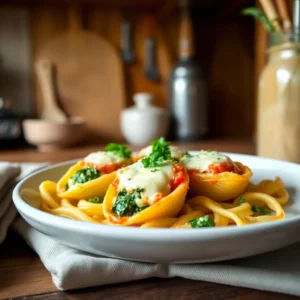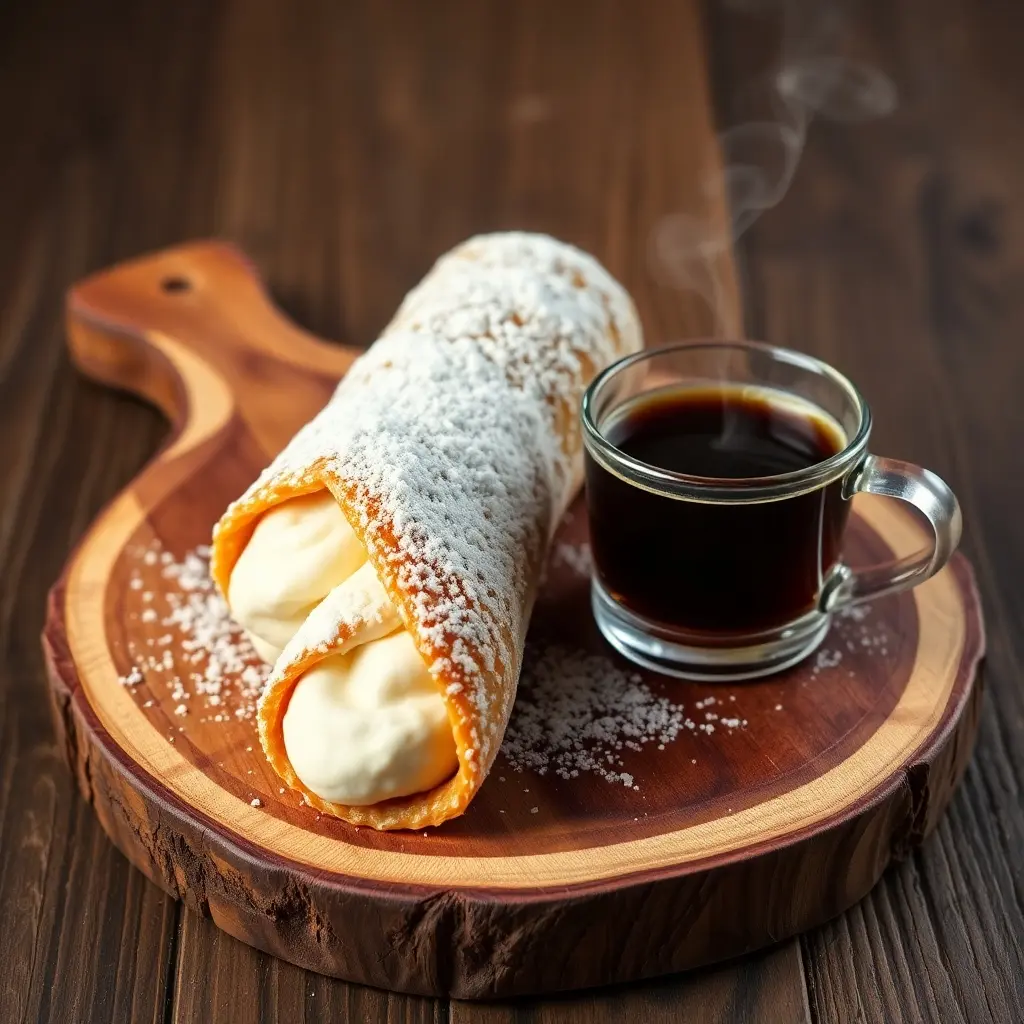Ricotta cheese, with its creamy texture and mild flavor, is a staple ingredient in many kitchens worldwide. Whether you’re preparing savory meals, delectable desserts, or even experimenting with homemade cheese, ricotta cheese recipes offer endless possibilities. In this article, you’ll explore seven comprehensive sections showcasing the versatility of ricotta cheese. From rich pasta dishes to healthy, light alternatives, these ideas are sure to spark your culinary creativity.
Part 1: Introduction to Ricotta Cheese
What is Ricotta Cheese?
Ricotta cheese, derived from the Italian word for “recooked,” is a soft, fresh cheese made from the whey left over after producing other cheeses like mozzarella. Its mild and creamy profile makes it incredibly versatile in both savory and sweet dishes. Unlike firmer cheeses, ricotta has a spreadable texture and delicate flavor, making it ideal for enhancing recipes without overpowering them.
History and Origin
Tracing back to ancient Rome, ricotta cheese has long been cherished in Mediterranean cuisines. Traditionally made using sheep’s milk, today’s versions often use cow’s milk for its widespread availability. Its early production method involved heating whey to create fluffy curds, a process that remains largely unchanged. Over time, ricotta became a cornerstone of Italian dishes such as lasagna, cannoli, and ravioli.
Culinary Uses of Ricotta
When it comes to versatility, ricotta cheese takes the crown. Its creamy consistency adds richness to savory dishes like spinach and ricotta stuffed shells, lightens up desserts such as lemon ricotta pancakes, and even shines as a stand-alone spread with honey. You can bake it, whip it, or use it straight out of the tub—there’s no end to what you can create.
Part 2: Savory Ricotta Recipes
Spinach and Ricotta Stuffed Shells
If you’re craving a hearty, comforting meal, spinach and ricotta stuffed shells are a perfect choice. These jumbo pasta shells are filled with a creamy ricotta and spinach mixture, then topped with marinara sauce and melted mozzarella. The ricotta’s mild flavor complements the richness of the spinach and the tang of the tomato sauce, creating a balanced and satisfying dish.
To prepare this recipe, start by boiling the shells until they’re al dente. While they cook, sauté fresh spinach until wilted, then mix it with ricotta, Parmesan, garlic, and a pinch of nutmeg. After stuffing the shells with the mixture, arrange them in a baking dish, cover with sauce, and bake until bubbly and golden. It’s a great dish to serve for family gatherings or as a meal prep option for the week.
Lemon Ricotta Pasta with Broccoli
Looking for a quick and refreshing meal? Lemon ricotta pasta with broccoli is your answer. The zesty lemon perfectly balances the richness of the ricotta cheese, while the broccoli adds a burst of freshness. Together, they create a light yet satisfying pasta dish that feels both indulgent and healthy.
To make this dish, cook your pasta until it’s just al dente. Meanwhile, sauté the broccoli until tender. In a separate pan, melt ricotta with olive oil, lemon zest, and a little garlic to make a creamy sauce. Combine everything and toss with fresh herbs like basil or parsley for an extra layer of flavor. It’s the kind of recipe that feels fancy, yet takes less than 30 minutes to prepare.
This recipe is one of those dishes that feels like a restaurant-quality meal, but it’s so easy to make at home. It’s also incredibly adaptable; swap out the broccoli for any other vegetable you like, such as peas, asparagus, or spinach.
Ricotta and Herb Frittata
A ricotta and herb frittata is an excellent way to use ricotta cheese in a savory breakfast or brunch. The creaminess of the ricotta combines beautifully with eggs and a mix of fresh herbs, creating a fluffy, flavorful frittata that can be enjoyed warm or at room temperature. It’s a versatile dish that can be customized with whatever vegetables or proteins you have on hand.
Begin by whisking together eggs, ricotta, and a selection of fresh herbs, such as chives, thyme, or rosemary. Pour the mixture into a hot, greased pan, and cook gently on the stovetop. Finish it off under the broiler to achieve a golden, crispy top. You can add sautéed mushrooms, bell peppers, or even cooked bacon for extra flavor.
Ricotta’s mild taste and soft texture make it the perfect addition to frittatas, adding creaminess without making the dish too heavy. And, like other ricotta cheese recipes, it pairs well with just about any vegetable or filling, making it a go-to meal for any occasion.
Part 3: Sweet Ricotta Recipes
Classic Italian Cannoli
 No list of ricotta cheese recipes would be complete without mentioning classic Italian cannoli. These crispy pastry shells, filled with sweetened ricotta cheese and studded with chocolate chips or candied fruits, are an iconic dessert. Cannoli offer a delightful crunch paired with the smooth, creamy filling, making them a treat that’s both texturally and flavorfully satisfying.
No list of ricotta cheese recipes would be complete without mentioning classic Italian cannoli. These crispy pastry shells, filled with sweetened ricotta cheese and studded with chocolate chips or candied fruits, are an iconic dessert. Cannoli offer a delightful crunch paired with the smooth, creamy filling, making them a treat that’s both texturally and flavorfully satisfying.
To make cannoli, mix ricotta cheese with powdered sugar, vanilla extract, and a pinch of cinnamon. For an authentic touch, fold in mini chocolate chips or finely chopped pistachios. Fill pre-made cannoli shells with the mixture using a piping bag, then dust them with powdered sugar. Although making the shells from scratch can be rewarding, buying them pre-made saves time without compromising on taste. Whether served at a party or enjoyed as a personal indulgence, cannoli are always a crowd-pleaser.
Lemon Ricotta Pancakes
If you’ve never tried lemon ricotta pancakes, you’re missing out on one of the fluffiest, most flavorful breakfast treats imaginable. The ricotta adds a delicate richness, while the lemon zest brings a burst of freshness that keeps the pancakes light and airy. It’s the perfect way to start your day on a sweet note.
Making these pancakes is simple. Begin by whisking together ricotta, milk, eggs, and vanilla. In another bowl, combine flour, sugar, baking powder, and a pinch of salt. Gently fold the wet ingredients into the dry mix, adding a generous amount of lemon zest. Cook the batter on a hot, greased skillet until the pancakes are golden brown and fluffy. Serve with a dollop of whipped cream, a drizzle of maple syrup, or a sprinkle of powdered sugar.
These pancakes are not only delicious but also versatile. You can add blueberries for a fruity twist or swap lemon zest for orange zest to change things up. The result is always a luxurious breakfast that’s sure to impress your family or guests.
Ricotta Cheesecake
For a dessert that feels indulgent yet not overly heavy, ricotta cheesecake is the answer. Unlike traditional cheesecakes made with cream cheese, ricotta gives this dessert a lighter, fluffier texture. Plus, it pairs beautifully with various toppings, from fresh berries to a drizzle of honey.
Start by blending ricotta cheese with sugar, eggs, and a touch of vanilla. Pour the mixture over a graham cracker or cookie crust in a springform pan. Bake the cheesecake gently to prevent cracks and ensure a creamy texture. Once cooled, top it with fruit compote, caramel, or even chocolate ganache for an added layer of flavor.
The beauty of a ricotta cheesecake lies in its adaptability. Whether you prefer it plain or loaded with toppings, this dessert never fails to delight. Additionally, it’s a healthier alternative to traditional cheesecake, thanks to the lighter profile of ricotta.
Part 4: Baking with Ricotta
Ricotta Bread Rolls
When it comes to baking, ricotta cheese recipes truly shine, and ricotta bread rolls are no exception. These soft, fluffy rolls have a slight tang from the ricotta and a wonderfully tender crumb. They’re perfect as a dinner accompaniment, sandwich base, or even a snack with a pat of butter.
To prepare, combine ricotta cheese with flour, yeast, salt, and a touch of olive oil. Knead the dough until smooth and elastic, then let it rise until doubled in size. After shaping the dough into rolls, let them proof once more before baking until golden brown. The ricotta not only enhances the flavor but also keeps the rolls moist and soft for days.
What’s great about this recipe is its adaptability. You can add herbs, garlic, or grated Parmesan to the dough for a savory twist, or opt for raisins and cinnamon for a sweeter variation. The possibilities are endless, and the results are always delightful.
Ricotta and Spinach Calzones
Baking a batch of ricotta and spinach calzones is a fantastic way to turn simple ingredients into a gourmet treat. These stuffed pizza pockets are filled with creamy ricotta, sautéed spinach, and melted mozzarella, delivering a savory explosion in every bite.
To make calzones, start with a basic pizza dough. Roll it out and fill one half with a mixture of ricotta, cooked spinach, garlic, and shredded cheese. Fold the dough over, seal the edges, and bake until golden brown and puffed. For added flavor, brush the tops with olive oil and sprinkle with Italian seasoning.
These calzones are perfect for busy weeknights, as they can be prepped in advance and baked when needed. Additionally, they’re easy to customize—try adding mushrooms, artichokes, or even cooked chicken to the filling. It’s a versatile dish that everyone will love.
Ricotta Scones
For a baked good that’s as delicious as it is unique, ricotta scones are an absolute must-try. Unlike traditional scones, these are lighter and moister, thanks to the ricotta cheese. Whether you prefer them sweet or savory, ricotta scones are a delightful addition to any breakfast or afternoon tea.
To prepare, mix flour, baking powder, and a pinch of salt with cold butter until crumbly. Stir in ricotta cheese, milk, and your choice of flavorings—such as lemon zest and blueberries for sweet scones or chopped chives and cheddar for savory ones. Shape the dough into rounds, brush with milk, and bake until golden.
Ricotta scones have a unique texture that makes them stand out. They’re tender without being overly crumbly and rich without feeling heavy. Plus, they pair beautifully with jams, honey, or even a dollop of whipped ricotta for an extra indulgent touch.
Part 5: Light and Healthy Ricotta Dishes
Ricotta and Vegetable Stuffed Peppers
When you’re looking for a healthy yet flavorful dinner option, ricotta and vegetable stuffed peppers fit the bill perfectly. These vibrant bell peppers are filled with a creamy ricotta mixture blended with sautéed vegetables, herbs, and a sprinkle of Parmesan. Not only are they nutritious, but they’re also visually appealing, making them great for family meals or entertaining guests.
To prepare, hollow out bell peppers and lightly roast them to enhance their sweetness. Meanwhile, mix ricotta cheese with cooked quinoa or rice, spinach, onions, and any vegetables of your choice. Spoon the mixture into the peppers, top with breadcrumbs, and bake until the tops are golden and bubbly. For a lighter twist, skip the breadcrumbs and garnish with fresh parsley instead.
This dish is highly adaptable, allowing you to use seasonal vegetables or whatever’s in your fridge. Plus, it’s packed with protein and fiber, making it a wholesome addition to your menu.
Zucchini and Ricotta Gratin
Zucchini and ricotta gratin is another wonderful way to incorporate ricotta cheese into a light, healthy dish. This simple yet elegant recipe layers thinly sliced zucchini with creamy ricotta, fresh herbs, and a touch of Parmesan, resulting in a dish that’s as satisfying as it is nutritious.
To make this gratin, slice zucchini thinly and season it with salt to remove excess moisture. Arrange the slices in a baking dish, layering them with dollops of ricotta cheese, minced garlic, and herbs like thyme or basil. Top it all off with grated Parmesan and breadcrumbs, then bake until golden and bubbling.
This gratin is not only low in calories but also high in flavor. It’s perfect as a side dish for grilled chicken or fish, but it’s hearty enough to be a main course when paired with a crisp salad.
Whipped Ricotta with Honey and Berries
 For a dish that’s both healthy and dessert-worthy, whipped ricotta with honey and berries is a standout choice. This no-cook recipe showcases ricotta’s creamy texture, complemented by the natural sweetness of honey and the tartness of fresh berries.
For a dish that’s both healthy and dessert-worthy, whipped ricotta with honey and berries is a standout choice. This no-cook recipe showcases ricotta’s creamy texture, complemented by the natural sweetness of honey and the tartness of fresh berries.
To create this dish, whip ricotta cheese with a touch of honey until smooth and fluffy. Serve it in bowls or glasses, topped with an assortment of fresh berries like strawberries, blueberries, and raspberries. For added texture, sprinkle with crushed nuts or granola.
Not only is this dish incredibly simple to make, but it’s also versatile enough to enjoy as breakfast, a snack, or a guilt-free dessert. The combination of protein-rich ricotta and antioxidant-packed berries makes it a healthy indulgence you’ll feel good about eating.
Part 6: Homemade Ricotta Cheese
Ingredients and Equipment Needed
Making your own ricotta cheese at home might sound daunting, but it’s surprisingly simple and incredibly rewarding. You’ll only need a few basic ingredients and tools to get started, and the result is fresh, creamy ricotta that tastes far superior to store-bought versions.
For ingredients, gather whole milk, heavy cream, lemon juice (or white vinegar), and a pinch of salt. As for equipment, you’ll need a heavy-bottomed pot, a thermometer, a fine mesh strainer, and cheesecloth. These common kitchen items make the process straightforward, so there’s no need for fancy tools.
Homemade ricotta not only ensures better quality but also allows you to control the flavor and texture. Plus, it’s a fun project that brings a sense of accomplishment.
Step-by-Step Preparation
To begin, heat the milk and cream gently in a pot over medium heat. Stir occasionally to prevent scorching, and use a thermometer to monitor the temperature. Once the mixture reaches around 190°F, remove it from heat and stir in the lemon juice or vinegar. You’ll notice curds forming almost immediately—this is the magical moment where ricotta comes to life!
Let the mixture sit undisturbed for about 5 minutes to allow the curds to fully develop. Then, carefully pour it into a strainer lined with cheesecloth, allowing the whey to drain. The longer you let it drain, the firmer your ricotta will become. After 10–20 minutes, transfer the ricotta to a bowl and add a pinch of salt for flavor. It’s now ready to use in your favorite ricotta cheese recipes or enjoy fresh with a drizzle of honey.
Tips for Perfect Ricotta
While making ricotta is straightforward, a few tips can help you achieve the best results every time. Firstly, always use high-quality milk and cream—avoid ultra-pasteurized options, as they don’t form curds as effectively. Secondly, don’t rush the process; letting the curds drain fully will yield a creamier texture. Lastly, experiment with flavors! Adding herbs or lemon zest to the finished ricotta can elevate its taste, making it even more versatile.
Homemade ricotta is not only fresher but also more economical and adaptable. Whether you’re making savory dishes, desserts, or simply spreading it on toast, this recipe guarantees satisfaction.
Part 7: Nutritional Information and Considerations
Nutritional Profile of Ricotta Cheese
Ricotta cheese, aside from its delightful taste and versatility, also boasts an impressive nutritional profile. It’s naturally high in protein, calcium, and essential vitamins such as B12. Unlike many other cheeses, ricotta is relatively low in fat, especially when you opt for part-skim varieties, making it an excellent choice for those seeking healthier options.
Per 100 grams, ricotta typically contains about 174 calories, 7 grams of fat, and 11 grams of protein. Additionally, it offers a good dose of calcium and phosphorus, which support strong bones and teeth. Its low sodium content compared to other cheeses also makes it a heart-healthy choice, as it helps regulate blood pressure and supports overall cardiovascular health.
Health Benefits
Including ricotta cheese in your diet can provide numerous health benefits, owing to its unique nutrient composition. Firstly, the high protein content helps with muscle repair and growth, making it an excellent addition to post-workout meals. Furthermore, its calcium levels contribute to bone density, reducing the risk of osteoporosis over time.
Moreover, ricotta’s lower fat and salt levels make it a more heart-friendly option compared to aged cheeses. It’s also easier to digest, as it’s made from whey, which contains less lactose than whole milk. For individuals with lactose sensitivity, this can be a more tolerable choice when consumed in moderation.
Because ricotta pairs well with a variety of foods, from fresh vegetables to fruits and grains, it can fit seamlessly into both savory and sweet dishes, ensuring that you never feel limited by dietary restrictions.
Dietary Considerations and Substitutions
While ricotta cheese is highly nutritious, it may not be suitable for everyone. People with severe lactose intolerance or dairy allergies should avoid it altogether. However, for those looking for dairy-free alternatives, options like almond ricotta or tofu-based ricotta substitutes are widely available and mimic the creamy texture beautifully. These plant-based versions are also rich in protein and lower in saturated fats, making them suitable for vegan and health-conscious diets.
If you’re watching your calorie intake, choosing low-fat ricotta can help you enjoy its benefits without overindulging. Additionally, you can use ricotta sparingly in recipes by combining it with other nutrient-dense ingredients like fresh vegetables or whole grains to stretch its volume without compromising flavor.
Ricotta cheese is more than just a staple ingredient; it’s a culinary powerhouse. Whether you’re crafting hearty savory dishes, indulgent desserts, or light and healthy meals, ricotta offers endless possibilities. Its nutritional benefits and adaptability make it a favorite in kitchens around the world. With these recipes, tips, and ideas, you’re now ready to make ricotta cheese a star ingredient in your cooking repertoire. Enjoy experimenting and creating new flavors in your kitchen!

